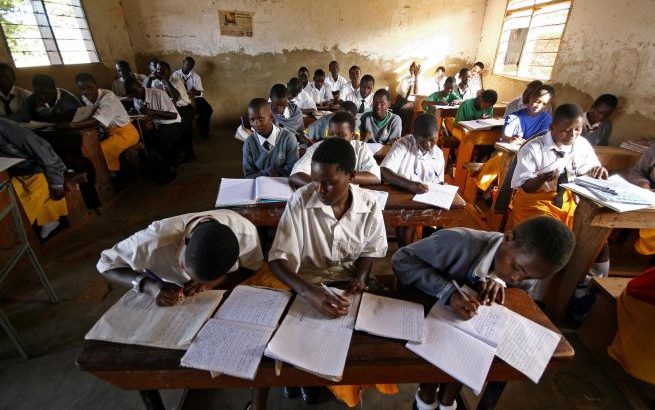Africa/Uganda/08 de Agosto de 2016/Autor: Emmanuel Ainebyoona/Fuente: All Africa
RESUMEN: La Primera Dama y el Ministro de Educación han expresado su preocupación por la elevada tasa de abandono escolar. Los líderes mundiales en septiembre del año pasado, durante una asamblea general de una semana en la sede de las Naciones Unidas en Nueva York adoptaron los ODS, un plan de 17 puntos de acción que se espera implementar en los próximos 15 años para mejorar la vida de los pueblos del mundo. La Sra Janet Museveni, al hablar en el cierre de una reunión de consulta nacional de dos días en SDG4 celebrada en Kampala el jueves, dijo que el país sigue lidiando con los problemas de las tasas de abandono que son altos en algunas regiones, especialmente para las niñas. «Necesitamos estrategias para hacer frente a este reto que se ha convertido en una enfermedad en nuestro sistema educativo. Por lo tanto, tenemos que garantizar los resultados del aprendizaje pertinentes y eficaces para los niños y las niñas”. También hizo hincapié en que existe la necesidad de asegurar que todos los jóvenes tengan la calidad y la educación inclusiva que resuena con el objetivo de desarrollo sostenible en la educación.
First Lady and Education minister has expressed concern over the high rate of school dropouts as the country draws a road map to implement Sustainable Development Goal (SDG) number four, on Education.
The world leaders in September last year, during a week-long general assembly at the United Nations headquarters in New York adopted the SDGs, an action 17-point plan that it is hoped nations will implement in the next 15 years to better the life of the people of the world. SDG Number Four places responsibility on nations to: «Ensure inclusive and equitable quality education and promote lifelong learning opportunities for all.»
Ms Janet Museveni, while speaking at the closure of a two-day national consultation meeting on SDG4 held in Kampala on Thursday, said the country is still grappling with issues of dropout rates which are high in some regions, especially for the girls.
«We need strategies to address this challenge which has become a disease in our education system. Therefore, we need to ensure relevant and effective learning outcomes for both boys and girls,» Ms Museveni said.
She also emphasised that there is need to ensure all young people have quality and inclusive education which resonates with the sustainable development goal on education.
However, the First Lady’s remarks came barely a fortnight after a new government self-assessment report released by the Office of the Prime Minister revealed that half of the pupils in universal primary schools cannot read or answer simple questions in mathematics.
«If we are to achieve SDG4, we must have education programmes that aim at addressing issues promoting productive engagement of youth at all levels of education,» she added.
The Teachers Initiative in sub-Saharan Africa report (TISSA) 2014 indicated that while almost every child enrols in Primary One, only 61 per cent of the current generation reaches Primary Seven. It also indicated that less than 30 per cent enrol in secondary school, of which only 47 per cent are girls.
The TISSA report also showed that only 10 per cent complete higher secondary (Senior Six) education in Uganda.
The meeting organised by the United Nations Educational, Scientific and Cultural Organisation ( Unesco) and United Nations Children’s Emergency Fund (Unicef) drafted a road map which calls for fast-tracking of the development of the Education Sector Policy for 2016-2020.
Fuente: http://allafrica.com/stories/201608080158.html
Fuente de la imagen: https://elalebrije.net/2015/05/18/ninos-de-mexico-tienen-el-mismo-nivel-educativo-de-uganda/escuela-en-uganda_655x438/







 Users Today : 29
Users Today : 29 Total Users : 35460160
Total Users : 35460160 Views Today : 43
Views Today : 43 Total views : 3418826
Total views : 3418826